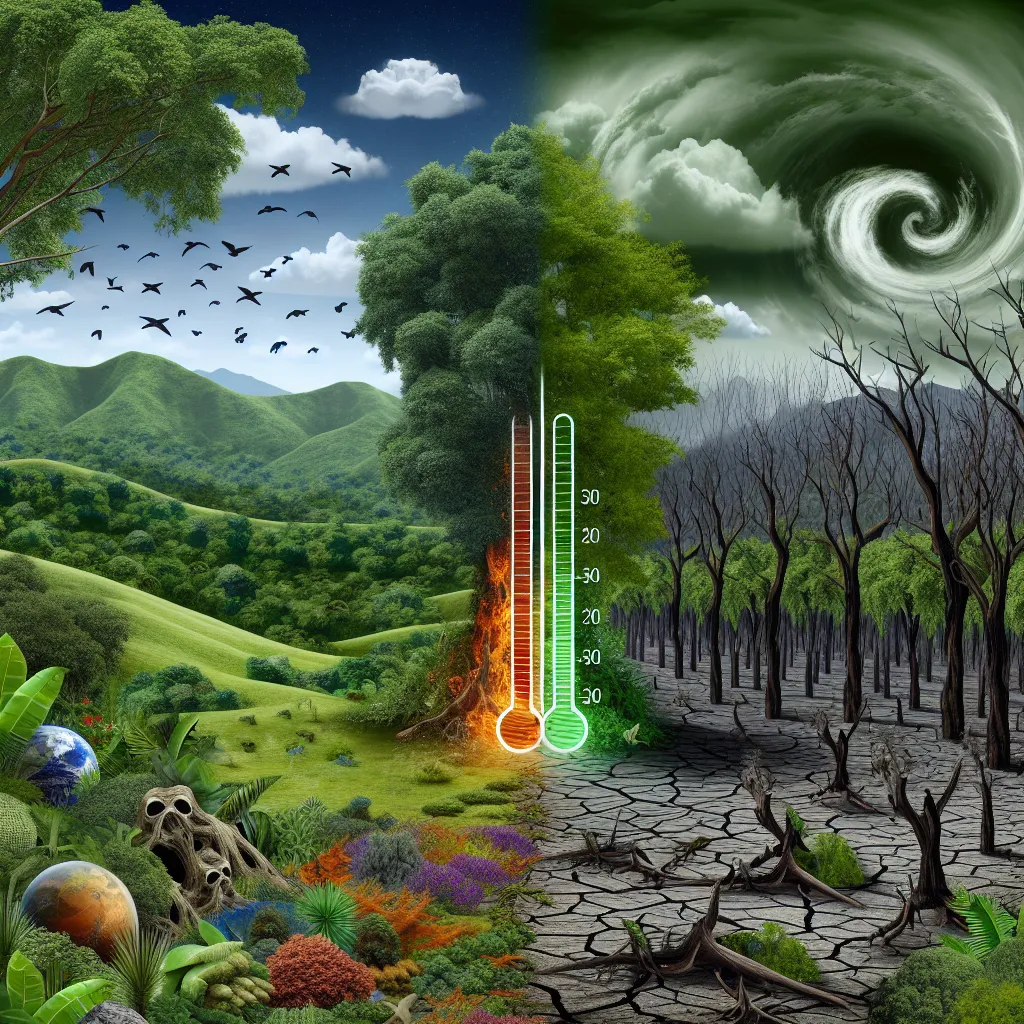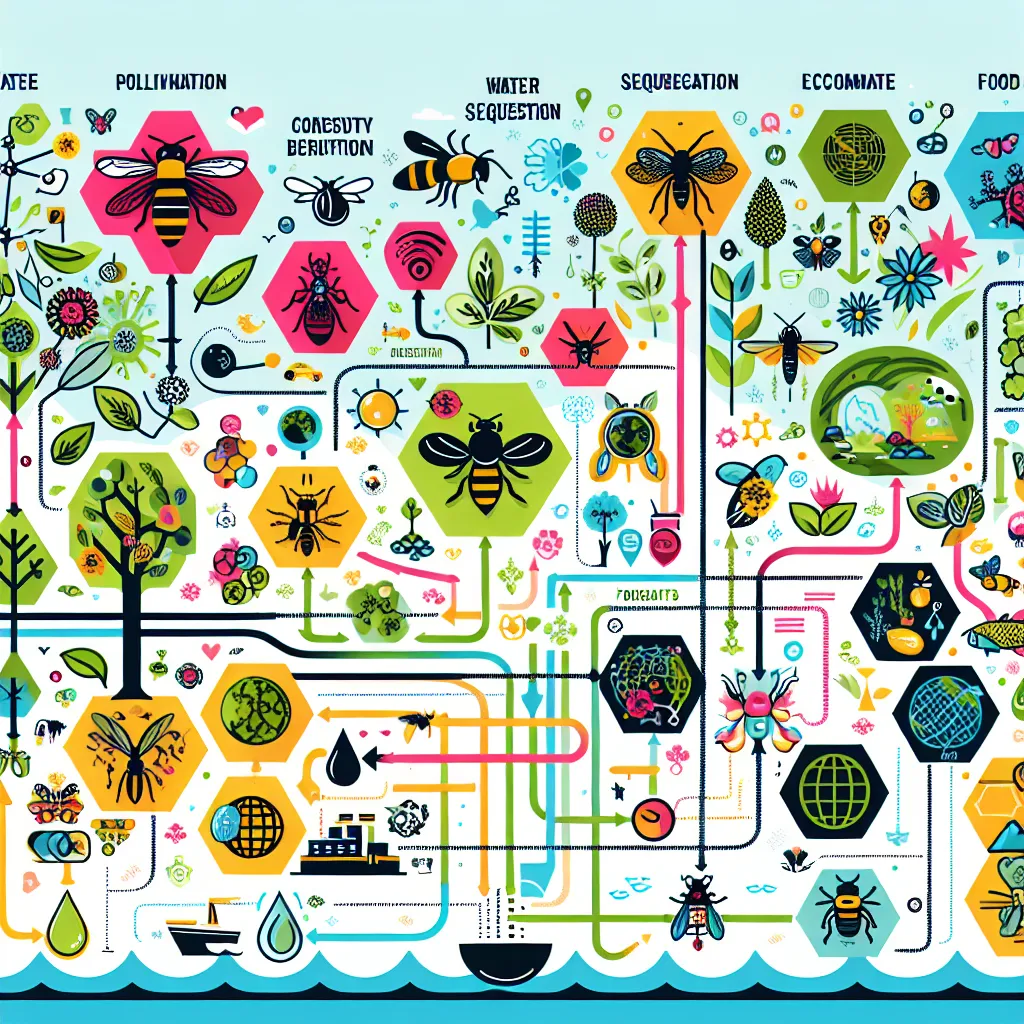Welcome to our IELTS Reading practice session focusing on the crucial topic of “The Impact of Deforestation on Climate Change.” This comprehensive practice test will help you sharpen your reading skills while exploring the intricate relationship between deforestation and climate change. As an experienced IELTS instructor, I’ve designed this test to closely mimic the actual IELTS Reading exam, providing you with valuable preparation for your upcoming test.
Table Of Contents
 Deforestation and Climate Change
Deforestation and Climate Change
IELTS Reading Test: The Impact of Deforestation on Climate Change
Passage 1 – Easy Text
Deforestation is a significant environmental issue that has far-reaching consequences for our planet’s climate. The process of clearing forests for various purposes, such as agriculture, urbanization, and timber production, has been accelerating at an alarming rate in recent decades. This large-scale removal of trees not only destroys habitats for countless species but also plays a crucial role in exacerbating climate change.
Trees are natural carbon sinks, absorbing carbon dioxide from the atmosphere through photosynthesis and storing it in their biomass and the soil. When forests are cleared, this stored carbon is released back into the atmosphere, contributing to the greenhouse effect. Moreover, the loss of trees reduces the planet’s capacity to absorb carbon dioxide, further amplifying the problem.
The impact of deforestation on climate change is multifaceted. Firstly, it directly increases greenhouse gas emissions. Secondly, it alters local and regional weather patterns, as forests play a vital role in the water cycle and temperature regulation. Lastly, deforestation can lead to soil erosion and degradation, which in turn affects agricultural productivity and food security.
To address this issue, many countries and organizations are implementing reforestation and afforestation programs. These initiatives aim to restore lost forest cover and create new forested areas, respectively. Additionally, sustainable forest management practices are being promoted to ensure that timber harvesting is done in a way that maintains forest health and biodiversity.
International cooperation is crucial in combating deforestation and its impact on climate change. Agreements such as the Paris Climate Accord include provisions for reducing deforestation and supporting sustainable forest management. Furthermore, consumer awareness and demand for sustainably sourced products can help drive changes in industry practices.
In conclusion, the link between deforestation and climate change is clear and significant. Addressing this issue requires a comprehensive approach involving governments, businesses, and individuals worldwide. By protecting and restoring our forests, we can make a substantial contribution to mitigating climate change and preserving the planet for future generations.
Questions for Passage 1
1-5. Do the following statements agree with the information given in the passage?
Write:
TRUE if the statement agrees with the information
FALSE if the statement contradicts the information
NOT GIVEN if there is no information on this
- Deforestation has been decreasing in recent decades.
- Trees absorb carbon dioxide through photosynthesis.
- Deforestation affects only local weather patterns.
- Reforestation and afforestation are strategies to combat deforestation.
- All countries have agreed to stop deforestation completely.
6-10. Complete the sentences below.
Choose NO MORE THAN TWO WORDS from the passage for each answer.
- Trees are referred to as natural , storing carbon dioxide in their biomass and soil.
- The loss of trees reduces the planet’s ability to absorb .
- Deforestation can lead to soil ___ and degradation.
- management practices are being promoted for responsible timber harvesting.
- Consumer demand for products can influence industry practices.
Passage 2 – Medium Text
The intricate relationship between deforestation and climate change has become a focal point of environmental research and policy discussions in recent years. As our understanding of Earth’s climate systems deepens, it becomes increasingly evident that the large-scale removal of forests is not merely a local environmental concern but a global issue with far-reaching implications for climate stability.
Forests play a pivotal role in regulating the Earth’s climate through various mechanisms. One of the most significant is their capacity to act as carbon sinks. Through the process of photosynthesis, trees absorb vast quantities of carbon dioxide from the atmosphere, effectively sequestering this greenhouse gas in their biomass and the surrounding soil. It is estimated that forests absorb approximately 2.6 billion tonnes of carbon dioxide annually, equivalent to about one-third of the carbon dioxide released from the burning of fossil fuels.
When forests are cleared or burned, this stored carbon is released back into the atmosphere, contributing to the greenhouse effect. Moreover, the act of deforestation itself often involves the burning of vegetation, which releases additional carbon dioxide and other greenhouse gases. This dual effect – the release of stored carbon and the reduction of future carbon sequestration capacity – makes deforestation a major contributor to global climate change.
The impact of deforestation extends beyond carbon emissions. Forests influence local and regional climate patterns through evapotranspiration, a process where water is transferred from the land to the atmosphere by evaporation from the soil and other surfaces and by transpiration from plants. This process plays a crucial role in the water cycle and helps to regulate temperature and rainfall patterns. Large-scale deforestation can disrupt these patterns, potentially leading to increased droughts in some areas and flooding in others.
Furthermore, deforestation can trigger a feedback loop that exacerbates climate change. As forests are cleared, the exposed soil is more susceptible to erosion and degradation. This can lead to a reduction in soil fertility and water retention capacity, making it harder for vegetation to regrow. The loss of vegetation further reduces the land’s ability to absorb carbon dioxide, creating a cycle of environmental degradation and increased greenhouse gas concentrations in the atmosphere.
The global nature of this issue necessitates international cooperation and comprehensive strategies. Initiatives such as REDD+ (Reducing Emissions from Deforestation and Forest Degradation) aim to create financial value for the carbon stored in forests, offering incentives for developing countries to reduce emissions from forested lands and invest in low-carbon paths to sustainable development. However, the success of such programs depends on addressing complex socio-economic factors that drive deforestation, including poverty, land rights, and economic pressures.
In conclusion, the impact of deforestation on climate change is profound and multifaceted. Addressing this issue requires a nuanced understanding of forest ecosystems, climate science, and socio-economic factors. As we continue to grapple with the challenges of climate change, preserving and restoring our forests must remain a top priority in global environmental policy.
Questions for Passage 2
11-14. Choose the correct letter, A, B, C, or D.
-
According to the passage, forests absorb approximately:
A) One-quarter of carbon dioxide from fossil fuels
B) One-third of carbon dioxide from fossil fuels
C) Half of carbon dioxide from fossil fuels
D) Two-thirds of carbon dioxide from fossil fuels -
The process of transferring water from land to the atmosphere through plant transpiration and surface evaporation is called:
A) Photosynthesis
B) Carbon sequestration
C) Evapotranspiration
D) Feedback loop -
Deforestation can lead to all of the following EXCEPT:
A) Increased carbon dioxide in the atmosphere
B) Disruption of local rainfall patterns
C) Improved soil fertility
D) Greater susceptibility to soil erosion -
The REDD+ initiative aims to:
A) Increase timber production in developing countries
B) Provide financial incentives for forest conservation
C) Promote industrialization in forested areas
D) Encourage the use of fossil fuels
15-20. Complete the summary below.
Choose NO MORE THAN TWO WORDS from the passage for each answer.
Deforestation has a significant impact on climate change through various mechanisms. Forests act as carbon (15), absorbing large amounts of carbon dioxide through (16). When forests are cleared, this stored carbon is released, contributing to the (17) effect. Additionally, deforestation affects local and regional climate patterns by disrupting the process of (18), which plays a crucial role in regulating temperature and rainfall. The loss of forests can trigger a (19) that further exacerbates climate change. Addressing this issue requires international cooperation and comprehensive strategies, such as the (20) initiative, which aims to create financial incentives for forest conservation.
Passage 3 – Hard Text
The nexus between deforestation and climate change represents one of the most pressing environmental challenges of our time, embodying a complex interplay of ecological, atmospheric, and socio-economic factors. As anthropogenic activities continue to alter the Earth’s landscape at an unprecedented rate, the ramifications for global climate systems have become increasingly apparent and alarming.
Forests, often referred to as the “lungs of the Earth,” play an indispensable role in regulating the planet’s climate through various biogeochemical and biophysical processes. The most well-documented of these is carbon sequestration, whereby trees absorb atmospheric carbon dioxide during photosynthesis and store it in their biomass and the surrounding soil. This process is so efficient that tropical forests alone are estimated to contain about 25% of the carbon in the terrestrial biosphere. However, when forests are cleared or degraded, this stored carbon is released back into the atmosphere, contributing significantly to the greenhouse effect.
The impact of deforestation on climate change extends far beyond the realm of carbon emissions. Forests influence regional and global climate patterns through evapotranspiration and albedo effects. Evapotranspiration, the combined process of evaporation from surfaces and transpiration from plants, plays a crucial role in the hydrological cycle and local climate regulation. Deforestation disrupts this cycle, potentially leading to altered precipitation patterns and increased likelihood of droughts in affected regions. Moreover, the albedo effect, which refers to the reflectivity of the Earth’s surface, is significantly altered when forests are replaced by agricultural land or urban areas, further influencing local and regional climate dynamics.
The relationship between deforestation and climate change is characterized by complex feedback loops. As global temperatures rise due to increased greenhouse gas concentrations, many forest ecosystems become more vulnerable to fires, pests, and diseases. This vulnerability can lead to further forest degradation and loss, releasing more stored carbon and reducing the Earth’s capacity for future carbon sequestration. This cyclical process has the potential to accelerate climate change, creating a dangerous positive feedback loop.
The drivers of deforestation are multifaceted and often deeply rooted in socio-economic factors. Agricultural expansion, particularly for commodities such as soy, palm oil, and beef, remains the primary cause of forest loss in many tropical regions. Timber extraction, mining, and infrastructure development also contribute significantly to deforestation rates. Addressing these drivers requires a nuanced approach that balances environmental conservation with economic development and food security concerns.
International efforts to combat deforestation and its impact on climate change have gained momentum in recent years. The Paris Agreement explicitly recognizes the role of forests in climate mitigation, encouraging countries to implement policies for reducing emissions from deforestation and forest degradation (REDD+). However, the effectiveness of such initiatives is often hampered by issues of governance, land tenure rights, and the challenge of quantifying and verifying forest carbon stocks.
Emerging technologies are playing an increasingly important role in monitoring and managing forests. Remote sensing and satellite imagery allow for real-time tracking of deforestation and forest degradation on a global scale. Machine learning algorithms are being employed to analyze this data, providing insights into deforestation patterns and helping to predict future trends. These technological advancements offer new opportunities for more effective forest conservation and climate change mitigation strategies.
The scientific community continues to refine our understanding of the complex interactions between forests and climate. Recent research has highlighted the importance of forest fragmentation and edge effects in carbon dynamics, suggesting that the impact of deforestation on climate change may be even more significant than previously thought. Additionally, studies on the role of forests in cloud formation and precipitation patterns are shedding new light on the full extent of forest-climate interactions.
In conclusion, the impact of deforestation on climate change is a multifaceted issue that requires a comprehensive and integrated approach to address effectively. As our understanding of these complex systems deepens, it becomes increasingly clear that preserving and restoring the world’s forests is not just an environmental imperative but a crucial component of global climate stability and sustainable development.
Questions for Passage 3
21-26. Complete the summary below.
Choose NO MORE THAN TWO WORDS from the passage for each answer.
Forests play a crucial role in regulating the Earth’s climate through various processes. They are often called the (21) of the Earth due to their ability to absorb carbon dioxide. Tropical forests alone contain approximately (22) of the carbon in the terrestrial biosphere. Deforestation affects climate not only through carbon emissions but also by disrupting (23) and altering the Earth’s (24). The relationship between deforestation and climate change involves complex (25), where rising temperatures can lead to more forest loss, further accelerating climate change. International efforts, such as the (26), aim to address this issue, but face challenges in implementation.
27-31. Do the following statements agree with the information given in the passage?
Write:
TRUE if the statement agrees with the information
FALSE if the statement contradicts the information
NOT GIVEN if there is no information on this
- Agricultural expansion is the main cause of deforestation in tropical regions.
- The Paris Agreement ignores the role of forests in climate mitigation.
- Remote sensing technology can track deforestation in real-time globally.
- Forest fragmentation has no significant impact on carbon dynamics.
- Preserving forests is considered crucial for both environmental and economic reasons.
32-35. Choose the correct letter, A, B, C, or D.
-
According to the passage, which of the following is NOT mentioned as a driver of deforestation?
A) Agricultural expansion
B) Timber extraction
C) Mining
D) Tourism -
The effectiveness of international efforts to combat deforestation is often hindered by:
A) Lack of technological solutions
B) Insufficient funding
C) Issues of governance and land tenure rights
D) Public opposition -
Emerging technologies in forest monitoring include:
A) Remote sensing and satellite imagery
B) Underwater cameras
C) Drones for individual tree counting
D) Soil composition analysis -
Recent research suggests that the impact of deforestation on climate change:
A) Has been overestimated
B) May be more significant than previously thought
C) Is limited to tropical regions
D) Can be easily reversed through reforestation
Answer Keys
Passage 1 Answers:
- FALSE
- TRUE
- FALSE
- TRUE
- NOT GIVEN
- carbon sinks
- carbon dioxide
- erosion
- Sustainable forest
- sustainably sourced
Passage 2 Answers:
- B
- C
- C
- B
- sinks
- photosynthesis
- greenhouse
- evapotranspiration
- feedback loop
- REDD+
Passage 3 Answers:
- lungs
- 25%
- evapotranspiration
- albedo
- feedback loops
- Paris Agreement
- TRUE
- FALSE
- TRUE
- FALSE
- TRUE
- D
- C
- A
- B
Conclusion
This IELTS Reading practice test on “The Impact of Deforestation on Climate Change” has provided you with a comprehensive exploration of this critical environmental issue. By engaging with these passages and questions, you’ve not only enhanced your reading skills but also gained valuable insights into the complex relationship between deforestation and climate change.
Remember, success in the IELTS Reading test comes from regular practice and developing effective strategies for time management and question analysis. Keep honing your skills, and you’ll be well-prepared for your upcoming IELTS exam.
For more IELTS preparation resources and practice tests, be sure to check out our other articles on the effects of deforestation on climate change and the impact of climate change on forest ecosystems. Good luck with your IELTS journey!


